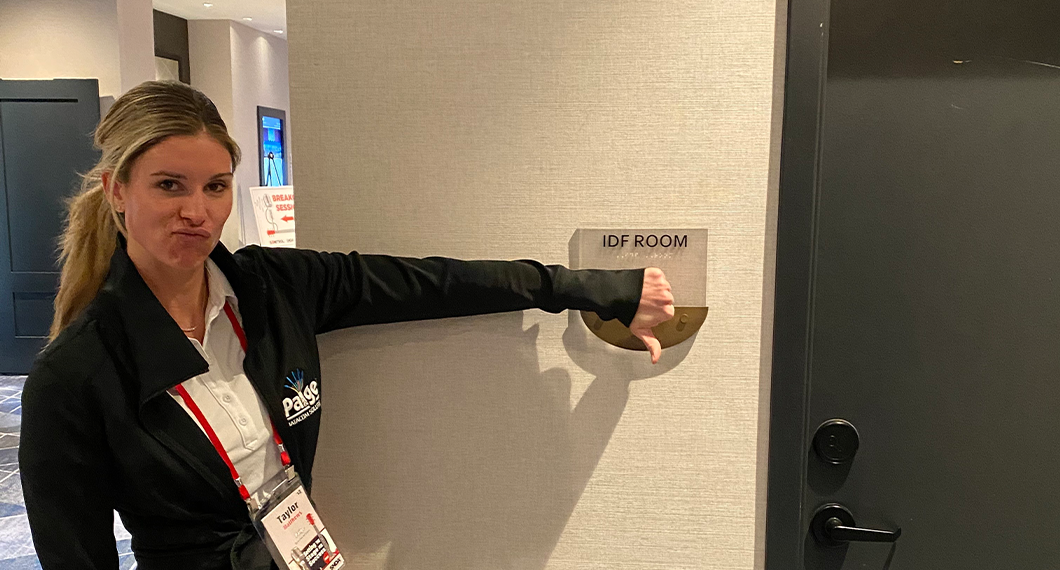
Telecom Rooms: The Geometry Behind Quadrupling Coverage
Telecom Rooms: The Geometry Behind Quadrupling Coverage
Telecom rooms (and/or IDF’s) are a necessity for smart building infrastructure but you can ask any building owner and they’d rather use that square footage for something else. Rather than this space driving revenue for the owner (think parking spots for a garage, inventory space for a warehouse, retail space for an airport, etc.) it’s an expense, and not a cheap one. Adding an IDF to your building’s infrastructure costs tens of thousands of dollars and in certain buildings the costs will even exceed six figures.
And so it is that creative architects, engineers, consultants and even integrators look for design solutions to extend the networking infrastructure beyond the standard 100m limit without adding points of failure or using precious operational space.
They’re looking for a way to change the game. And while the answer may feel new, the solution lies in a simple mathematical equation that we all remember from middle school. The area of a circle is calculated as Pi times the radius, squared.
Understanding the Area of a Circle Formula
To comprehend how extending the length of cable drops can reduce the amount of IDFs or telecom rooms that are needed, we must to delve into a fundamental geometric concept: the area of a circle. The formula for calculating the area of a circle is given as:
Area = π × r2
In this formula, 'π' represents the mathematical constant Pi (approximately equal to 3.14159), and 'r' denotes the radius of the circle. This formula tells us that the area covered by a circle is directly proportional to the square of its radius. In simpler terms, if you double the radius, you quadruple the area.
Applying the Circle Area Concept to Cable Drops
Now, let's draw a parallel between the area of a circle and the reach of a cable drop from a telecom room. Consider the telecom room as the center of a circle, and the cable drop as the radius. The circle represents the area that can be effectively serviced by the telecom room.
- Scenario 1: Standard Cable Drop Length (r)
In the initial scenario, let's use standard Ethernet copper cabling (Cat6) with its maximum cable drop length (radius) of 328’. This length defines the coverage area of the telecom room.
Area 1 = π × 3282 = ~340k sq ft
- Scenario 2: Doubled Cable Drop Length (2r)
Now, let's explore what happens when you can double the maximum cable drop length to 656’.
Area 2 = π × 6562 = ~1.35M sq ft
Comparing the two scenarios: A2 = A1 × 4
This mathematical principle demonstrates that when you double the cable drop length, the coverage area becomes four times larger, substantially increasing the area serviced by a telecom room.
This extended distance can be accomplished using Paige’s GameChanger® Cable, a patented solution that delivers up to 2.5Gbps and 100W of PoE over 656 feet (200 meters).
Practical Implications
While the coverage areas calculated above make mathematical sense, we know that in the real world cable moves in three dimensions, often times needing to travel up and down before it can go right and left, etc. This reality will reduce the usable coverage area in some cases and will expand it into three dimensions in others. Overall, the main takeaway should be that designing your infrastructure with a Cat6 that can go twice as far will yield dramatic results including:
- Enhanced Coverage: By doubling cable drop lengths, you can cover significantly larger geographical areas without the need for additional telecom rooms.
- Cost Efficiency: When fewer telecom rooms are required, it saves valuable space, as well as significant construction and maintenance costs. In many cases, it can also increase sellable square footage.
- Improved Reliability: The broader coverage reduces potential points of failure and establishes a more reliable infrastructure.
- Improved Flexibility: The broader coverage allows IDFs to be placed in areas that are easier to service, and less disruptive to the customers’ operations.
In conclusion, the principles of geometry prove that doubling the length of a cable drop quadruples the coverage area of a telecom room. It is the ability to apply this principle in real installations that makes it a gamechanger – and leads to the positive result of networking projects being significantly more efficient and cost-effective.
# # #

